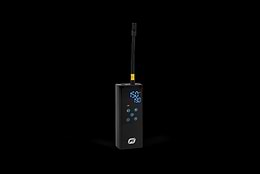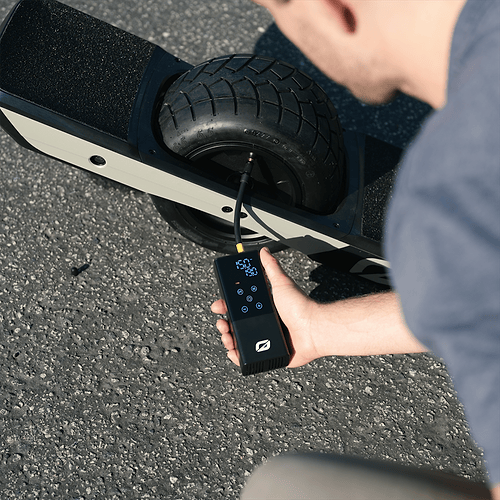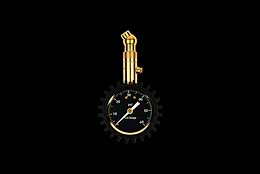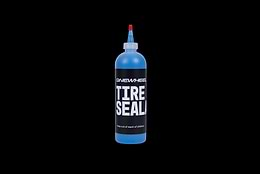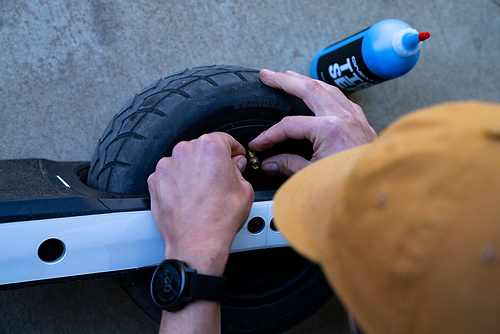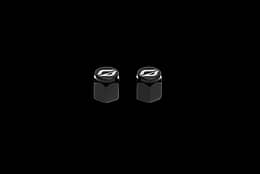When it comes to riding a Onewheel, the right tire pressure can make all the difference in terms of stability, maneuverability, and overall performance. In this breakdown, we'll analyze the effects of rider experience, rider weight, terrain, and weather conditions on tire pressure. We’ll lay out the general principles involved in finding the right tire pressure, but be aware that ultimately the perfect tire pressure is a personal preference. You’ll want to do some experimenting to find what feels best for you!
General Tire Pressure Range
The general recommended tire pressure range for Onewheel riders is between 15 PSI and 20 PSI. This range is optimal for achieving a balance between stability and maneuverability while also getting good longevity from your tire.
Lower tire pressure will create a softer, more forgiving, and less responsive ride. Lower PSI is generally good for new riders looking for more stability or advanced riders looking for a more cushioned ride off-road. However, if your tire pressure is too low, it can make your Onewheel feel sluggish, drastically limiting your speed and range and also wear down your tire at higher rates.
On the other hand, high tire pressure creates a stiffer and more responsive ride. You will also get more range with higher PSI. Generally, higher PSI is good for folks riding on pavement and those going on longer adventures. If your tire pressure is too high, it can make your board feel unforgiving and reactive.
The biggest factors in finding your ideal tire pressure are experience level, rider weight, and terrain.


New Riders
If you're still learning the ropes of riding, a pro tip is to air down your tire. That's because lower PSI creates a more plush, stable, and forgiving ride. Boards ship from the factory at 20 PSI, so if you've got the wobbles, air down to 15 PSI, and you'll feel a big difference in stability.
Rider Weight
Don't agree on the perfect PSI with your friend 20 pounds lighter than you? That's because rider weight has a lot to do with how your tire feels and performs. Heavier riders are generally suited to ride with slightly more tire pressure than lighter riders because their weight exerts more pressure on the tire. A good rule of thumb is to set your tire pressure to 10% of your weight and then adjust from there to find the perfect PSI for your weight. For example, a 200lb rider would start at 20PSI, while a 150lb rider would start at 15PSI. Again, this is a general rule, try going up and down by a few PSI to find what feels best.
Terrain
Most experienced riders change their tire pressure depending on the terrain they’re riding on. So, what's the secret? If you are riding on a smooth and flat surface, like pavement, you won't need as much absorption, and you may want to run higher tire pressure. This will provide a more efficient ride for range and speed.
On the other hand, if you are riding on rough or uneven terrain, you will want to run lower tire pressure. Lower PSI will allow the tires to absorb the bumps and vibrations of the terrain, providing a more comfortable and smoother ride. You'll also get better traction with lower tire pressure, so if you're riding in loose terrain, you may want to air down a bit.
Weather
Be aware that temperature has an effect on your tire pressure. Hotter temperatures cause air to expand which can increase your tire pressure, while cooler temperatures cause air to contract which can lower your tire pressure. It may be subtle, but if it’s really cold out and your tire feels lower than you expected, you’ll know why. It’s good to get into the habit of checking your tire pressure regularly in extreme temperatures to make sure you’re riding at your desired PSI.
Stay On Top Of It
Riding outside of recommended tire pressure ranges can lead to damage to your tire. To ensure that you're always riding with the correct tire pressure, it's a good idea to check your tire pressure regularly. A simple tire pressure gauge can help you quickly and easily check the pressure of your tires. Or you can also use the handy dandy Portable Tire Inflator on our site, which can read your pressure and inflate your tire to your exact specifications. Both of these products fit in a fanny pack or backpack and are a game changer for riders who like to air down or air up depending on terrain.
In conclusion, identifying your ideal tire pressure in different conditions is a major key to becoming the best rider you can be. A range between 15 and 20 PSI is recommended, but play around with it and figure out what tire pressure feels best for you. Hope this was helpful, and have fun out there!


